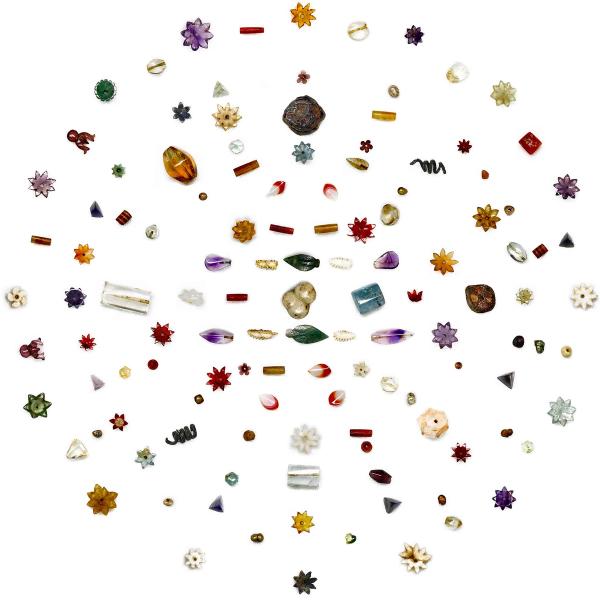Relics from the Piprahwa stupa
Artwork Details
- Title: Relics from the Piprahwa stupa
- Period: Maurya
- Date: ca. 240–200 BCE
- Culture: India, Piprahwa Great Stupa, Siddharthnagar district, Uttar Pradesh
- Medium: Gold, semiprecious stones, rock crystal, pearls, and shell
- Dimensions: Box A: H. 7 7/8 in. (20 cm); W. 5 7/8 in. (15 cm); D. 13/16 in. (5.1 cm)
Box B: H. 7 7/8 in. (20 cm); W. 5 7/8 in. (15 cm); D. 13/16 in. (5.1 cm)
C, in wood display case: H. 17 11/16 in. (45 cm.); W. 17 11/16 (45 cm.); D. 3 15/16 in. (10 cm.) - Classification: Jewelry
- Credit Line: Lent by a private collection
- Rights and Reproduction: Photo by lender
- Curatorial Department: Asian Art
Audio

673. Relics from the Piprahwa Stupa
JOHN GUY: In this exhibition we’ve been very privileged to present a group of objects which are of enormous importance to practicing Buddhists, and have great sanctity, because of their association with the Buddha himself.
NARRATOR: These objects are known as relics. When the Buddha passed away, his ashes and bones were gathered, divided, and shared among eight prominent rulers of North India who placed them in stupas to honor him.
JOHN GUY:We have an assortment of objects: gemstones, coral, rock crystal, gold and silver-trimmed flower motifs, some 320 tiny objects, presented in three framed ensembles which were all part of an excavation conducted in 1898.
NARRATOR: Inspired by excavations at the time, an English estate manager, William Peppé, unearthed these relics from a mound on a private estate near the northern border of India.
JOHN GUY: He found an extraordinary, large stone coffer in which he found a whole series of reliquaries, containers in which offerings were made. One of the relic containers, had an inscription indicating that the bone and ash were those of the Buddha himself. The first such claim ever to be made based on an inscription and, of course, caused a sensation.
NARRATOR: Corporeal relics, or bodily remains of the Buddha, have the highest sanctity among practicing Buddhists.
JOHN GUY: These discoveries were of enormous importance in the history of the rediscovery of Buddhism in the late nineteenth-century in India. Buddhism had ceased to be a living religion in India by this time. It had continued in many other places, but in India it was largely a spent force for more than a thousand years.